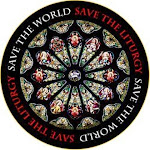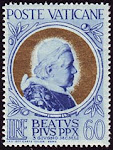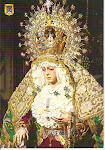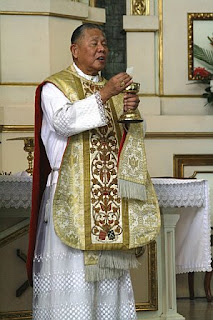
Libreria Editrice Vaticana has published a book, Dominus Est by Bishop Athansius Schnedier, where that Bishop analyzes the question of communion recieved kneeling and on the tongue. Archbishop Malcolm Ranjith has written the foreward to this book, which the NLM is happy to present an unofficial translation here to follow. (Many thanks to a good friend of the NLM for providing the link to this, which came originally through, Associazione Luci sull'Est. Without further adieu, the foreword of Msgr. Ranjith, Secretary to the CDW: In the Book of Revelation, St. John tells how he had seen and heard what was revealed and prostrated [himself] in adoration at the foot of the angel of God (cf. Rev 22, 8). Prostrating, or getting down one one's knees before the majesty of the presence of God in humble adoration, was a habit of reverence that Israel brought constantly to the presence of the Lord. It says the first book of Kings, "when Solomon had finished putting this prayer to the Lord and this plea, he stood up before the altar of the Lord, where he was kneeling, with palms stretched heavenward, and blessed the whole assembly of Israel "(1 King 8, 54-55). The position of supplication of the King is clear: He was kneeling in front of the altar. The same tradition is also visible in the New Testament where we see Peter get on his knees before Jesus (cf. Lk 5, 8); when Jairus asked him to heal her daughter (Luke 8, 41), when the Samaritan returned to thank him, and when Mary the sister of Lazarus asked for the life of her brother (John 11, 32). The same attitude of prostration before the revelation of the divine presence and is generally known in the Book of Revelation (Rev. 5, 8, 14 and 19, 4). Closely linked to this tradition was the conviction that the Holy Temple in Jerusalem was the dwelling place of God and therefore, in the temple it was necessary to prepare one's disposition by corporal expression, a deep sense of humility and reverence in the presence of the Lord. Even in the Church, the deep conviction that in the Eucharistic species the Lord is truly and really present, along with the growing practice of preserving the Holy Sacrament in tabernacles, contributed to practice of kneeling in an attitude of humble adoration of the Lord in the Eucharist. [...] ...faith in the Real Presence of Christ in the Eucharistic species already belonged to the essence of the faith of the Catholic Church and was an intrinsic part of Catholicism.
It was clear that we could not build up the Church if that faith was minimally affected. Therefore, the Eucharist, bread transubstantiated in Body of Christ and wine into the Blood of Christ, God among us, is to be greeted with wonder, reverence and an immense attitude of humble adoration. Pope Benedict XVI... points out that "receiving the Eucharist means adoring him whom we receive [...] only in adoration can a profound and genuine reception mature."(Sacramentum Caritatis 66). Following this tradition, it is clear that it became coherent and indispensable to take actions and attitudes of the body and spirit which makes it easier to [enter into] silence, recollection, and the humble acceptance of our poverty in the face of the infinite greatness and holiness of the One who comes to meet us in the Eucharistic species. The best way to express our sense of reverence to the Lord in Mass is to follow the example of Peter, who as the Gospel tells us, threw himself on his knees before the Lord and said, 'Lord, depart from me, for I am a sinner " (Luke 5, 8). As we see in some churches now, this practice is decreasing and those responsible not only require that the faithful should receive the Holy Eucharist standing, but even eliminate all kneelers forcing the faithful to sit or stand, even during the elevation and adoration of the [Sacred] Species. It is ironic that such measures have been taken in [some] dioceses by those responsible for liturgy, or in churches, by pastors, without even the smallest amount of consultation of the faithful, even though today, more than ever, there is an environment desiring democracy in the Church. At the same time, speaking of communion in the hand, it must be recognized that the practice was improperly and quickly introduced in some quarters of the Church shortly after the Council, changing the age-old practice and becoming regular practice for the whole Church.
One who comes to meet us in the Eucharistic species. The best way to express our sense of reverence to the Lord in Mass is to follow the example of Peter, who as the Gospel tells us, threw himself on his knees before the Lord and said, 'Lord, depart from me, for I am a sinner " (Luke 5, 8). As we see in some churches now, this practice is decreasing and those responsible not only require that the faithful should receive the Holy Eucharist standing, but even eliminate all kneelers forcing the faithful to sit or stand, even during the elevation and adoration of the [Sacred] Species. It is ironic that such measures have been taken in [some] dioceses by those responsible for liturgy, or in churches, by pastors, without even the smallest amount of consultation of the faithful, even though today, more than ever, there is an environment desiring democracy in the Church. At the same time, speaking of communion in the hand, it must be recognized that the practice was improperly and quickly introduced in some quarters of the Church shortly after the Council, changing the age-old practice and becoming regular practice for the whole Church.
 One who comes to meet us in the Eucharistic species. The best way to express our sense of reverence to the Lord in Mass is to follow the example of Peter, who as the Gospel tells us, threw himself on his knees before the Lord and said, 'Lord, depart from me, for I am a sinner " (Luke 5, 8). As we see in some churches now, this practice is decreasing and those responsible not only require that the faithful should receive the Holy Eucharist standing, but even eliminate all kneelers forcing the faithful to sit or stand, even during the elevation and adoration of the [Sacred] Species. It is ironic that such measures have been taken in [some] dioceses by those responsible for liturgy, or in churches, by pastors, without even the smallest amount of consultation of the faithful, even though today, more than ever, there is an environment desiring democracy in the Church. At the same time, speaking of communion in the hand, it must be recognized that the practice was improperly and quickly introduced in some quarters of the Church shortly after the Council, changing the age-old practice and becoming regular practice for the whole Church.
One who comes to meet us in the Eucharistic species. The best way to express our sense of reverence to the Lord in Mass is to follow the example of Peter, who as the Gospel tells us, threw himself on his knees before the Lord and said, 'Lord, depart from me, for I am a sinner " (Luke 5, 8). As we see in some churches now, this practice is decreasing and those responsible not only require that the faithful should receive the Holy Eucharist standing, but even eliminate all kneelers forcing the faithful to sit or stand, even during the elevation and adoration of the [Sacred] Species. It is ironic that such measures have been taken in [some] dioceses by those responsible for liturgy, or in churches, by pastors, without even the smallest amount of consultation of the faithful, even though today, more than ever, there is an environment desiring democracy in the Church. At the same time, speaking of communion in the hand, it must be recognized that the practice was improperly and quickly introduced in some quarters of the Church shortly after the Council, changing the age-old practice and becoming regular practice for the whole Church. They justified the change saying that it better reflected the Gospel or the ancient practice of the Church... Some, to justify this practice referred to the words of Jesus: "Take and eat" (Mk 14, 22; Mt 26, 26). Whatever the reasons for this practice, we cannot ignore what is happening worldwide where this practice has been implemented. This gesture has contributed to a gradual weakening of the attitude of reverence towards the sacred Eucharistic species whereas the previous practice had better safeguarded that sense of reverence. There instead arose an alarming lack of recollection and a general spirit of carelessness. We see communicants who often return to their seats as if nothing extraordinary has happened... In many cases, one cannot discern that sense of seriousness and inner silence that must signal the presence of God in the soul. Then there are those who abuse takes away the sacred species to keep them as souvenirs, those who sell, or worse yet, who take them away to desecrate it in Satanic rituals. Even in large concelebrations, also in Rome, several times the sacred species has been found thrown onto the ground. This situation not only leads us to reflect upon a serious loss of faith, but also on outrageous offenses... The Pope speaks of the need not only to understand the true and deep meaning of the Eucharist, but also to celebrate it with dignity and reverence. He says that we must be aware of "gestures and posture, such as kneeling during the central moments of the Eucharistic Prayer." (Sacramentum Caritatis,  65).
65).
 65).
65). Also, speaking about the reception of the Holy Communion he invites everyone to "make every effort to ensure that this simple act preserves its importance as a personal encounter with the Lord Jesus Christ in the sacrament." (Sacramentum Caritatis, 50). In this vein, the book written by Bishop Athanasius Schneider, Auxiliary Bishop of Karaganda in Kazakhstan entitled Dominus Est is significant and appreciated. He wants to make a contribution to the current debate on the real and substantial presence of Christ in the consecrated species of bread and wine... from his experience, which aroused in him a deep faith, wonder and devotion to the Lord present in the Eucharist, he presents us with a historical-theological [consideration] clarifying how the practice of receiving Holy Communion on the tonue and kneeling has been accepted and practiced in the Church for a long period of time.
Now I think it is high time to review and re-evaluate such good practices and, if necessary, to abandon the current practice that was not called for by Sacrosanctum Concilium, nor by Fathers, but was only accepted after its illegitimate introduction in some countries. Now, more than ever, we must help the faithful to renew a deep faith in the Real Presence of Christ in the Eucharistic species in order to strengthen the life of the Church and defend it in the midst of dangerous distortions of the faith that this situation continues to cause. The reasons for this move must be not so much academic but pastoral - spiritual as well as liturgical - in short, what builds better faith. Mons. Msgr. Schneider in this sense shows a commendable courage because he has been able to grasp the true meaning of the words of St. Paul: "but everything should be done for building up" (1 Cor 14, 26).
Now I think it is high time to review and re-evaluate such good practices and, if necessary, to abandon the current practice that was not called for by Sacrosanctum Concilium, nor by Fathers, but was only accepted after its illegitimate introduction in some countries. Now, more than ever, we must help the faithful to renew a deep faith in the Real Presence of Christ in the Eucharistic species in order to strengthen the life of the Church and defend it in the midst of dangerous distortions of the faith that this situation continues to cause. The reasons for this move must be not so much academic but pastoral - spiritual as well as liturgical - in short, what builds better faith. Mons. Msgr. Schneider in this sense shows a commendable courage because he has been able to grasp the true meaning of the words of St. Paul: "but everything should be done for building up" (1 Cor 14, 26).
MALCOLM RANJITH
Secretary of the Congregation for Divine Worship





























